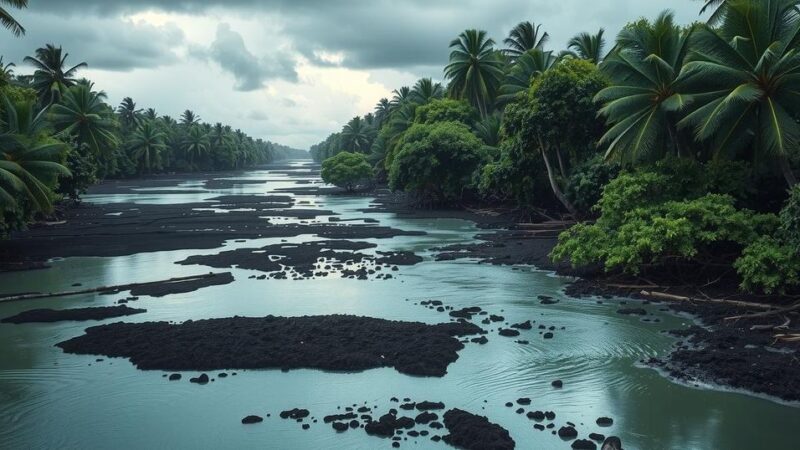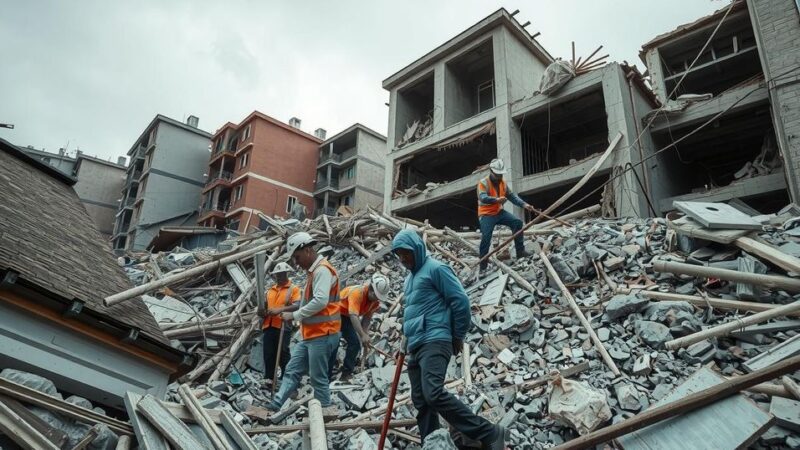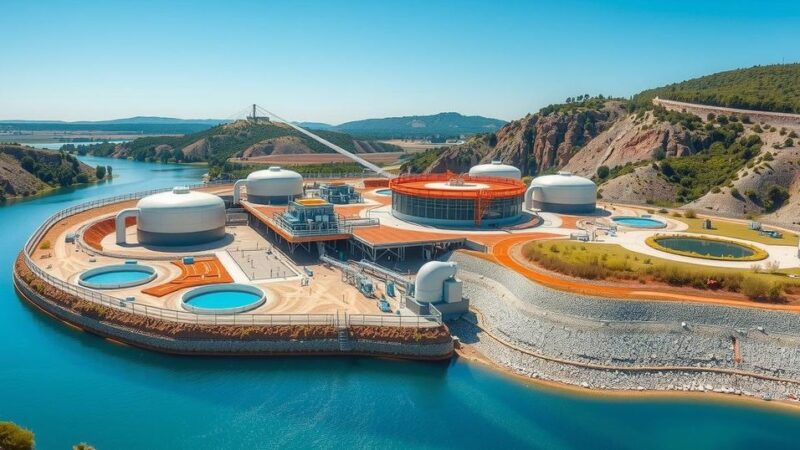In Lima, Peru, over 635,000 residents face a lack of running water, relying on infrequent deliveries from tanker trucks, which often provide unsanitary conditions. This situation reveals significant inequalities in water access, particularly in impoverished areas like San Juan de Miraflores, exacerbated by environmental challenges and inadequate urban planning. Experts emphasize the need for urgent systemic change to alleviate this crisis.
In the arid hills surrounding Lima, Peru, a significant number of residents face a grim reality: the absence of running water in their homes, relying instead on infrequent deliveries from tanker trucks. With over 10 million inhabitants, Lima stands as the world’s second-largest city situated in a desert, trailing only Cairo. Despite its proximity to the Pacific Ocean, the Andes Mountains, and several rivers, resources are limited, and rainfall remains sparse.
Currently, more than 635,000 residents of Lima live without access to running water, according to the National Institute of Statistics and Computer Science. These individuals often inhabit informal settlements on the city’s outskirts, where the infrastructure for water and sewage is non-existent. In areas like San Juan de Miraflores, blue tanker trucks provide water deliveries, but these often fall short of the basic needs of the community.
Residents receive water at least once a week, but the supply is often unsanitary. Catalina Naupa, a local resident, has reported health problems linked to the quality of the water, stating that there are “worms in the bottom of the tank.” During winter months, deliveries can cease altogether due to difficult road conditions. Many individuals must conserve water, managing laundry once every week or two.
The water utility company Sedapal estimates an allocation of one cubic meter of water per family weekly, translating to approximately 30 liters per person daily. This is significantly below the UN’s recommended minimum of 50-100 liters per person, raising concerns about future rationing amid periods of low rainfall, as noted by Jeremy Robert from the Institute for Development Research in France.
Environmental experts point out that climate change exacerbates the situation by lowering water levels in local mountains and rivers. Antonio Ioris, a geography professor at Cardiff University, emphasizes that the crisis is tied to poor urban planning and rural challenges that compel individuals to migrate to urban areas, rather than solely supply issues.
Infrastructure limitations hinder access in more remote sections of San Juan de Miraflores, forcing residents to pay exorbitantly for the water they receive—up to six times the cost for those on the utility grid. In a hilltop area, a large concrete barrier—referred to as the “wall of shame”—isolates these communities from wealthier neighborhoods, highlighting stark disparities in living conditions.
On the other side of the wall, neighborhoods such as Santiago de Surco thrive with ample water resources and lush vegetation. Cristel Mejia, who operates a soup kitchen in San Juan de Miraflores, describes the other side as “another world,” revealing the harsh divide in resource accessibility and quality of life between rich and impoverished areas of Lima.
The water crisis in Lima exposes severe inequalities in access to basic resources, particularly for marginalized communities. With over 635,000 people lacking running water, the reliance on unsanitary tanker truck supplies exacerbates health issues and highlights systemic failures in urban planning and rural support. As climate change threatens future water availability, urgent actions are required to address the underlying disparities and improve residents’ living conditions.
Original Source: homenewshere.com






